Police Pictures

Beez Neez now Chy Whella
Big Bear and Pepe Millard
Sun 20 Jul 2014 22:37
|
A Very Moving Exhibition Called ‘Beyond the Cordon’ in
Canterbury Museum
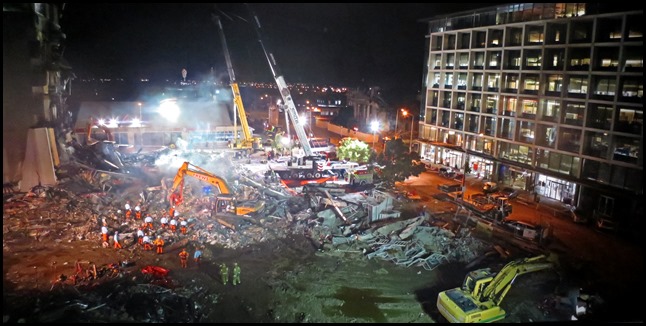 The 22nd of February 2011
Christchurch earthquake was New Zealand’s second-deadliest natural disaster,
triggering an unprecedented emergency response. The magnitude 6.3 earthquake,
which struck at 12:51 pm, resulted in the death of 185 people at locations
across the city and suburbs, as well as thousands of injuries.
Christchurch, the country’s second
largest city, suffered widespread devastation to buildings, homes, land and
infrastructure. A national state of emergency was in place for ten weeks as
emergency services, engineers, soldiers, contractors and other specialists
worked to rescue and recover the lost and the missing, make buildings safe,
restore essential services and bring relief to the city.
The task of visually documenting the
rescue and victim recovery operation fell to New Zealand Police photographers. A
team of twenty three Police forensic photographers, nine from Christchurch and
fourteen from around New Zealand mobilsed within hours of the quake and for
weeks worked around the clock in the central city, at suburban locations and at
the temporary mortuary at Burnham Military Camp. They were there primarily as
part of the disaster victim identification – DVI, formally recording each
detailed step in the recovery and identification process as Police sought to
return loved ones to their families.
As the rescue, recovery and
demolition operations went on around them, however, they realised there were
images that needed to be captured. With the central city in lock-down because of
the risk of aftershocks, Police photographers were the only photographers with
long-term access to the central city throughout the following weeks. Working in
the often hostile conditions – smoldering rubble, flying shards of concrete, the
constant threat of aftershocks as they perched precariously on collapsed
buildings – they took every opportunity to record what they saw around them,
including aspects of the operation that would otherwise remain
undocumented.
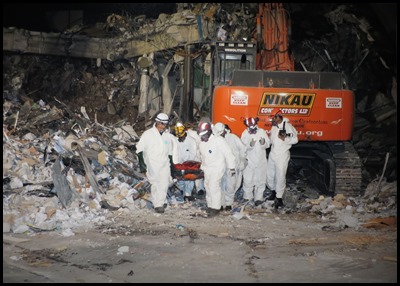 Some of these images have been
published in Christchurch 22.2 – Beyond the Cordon, New Zealand Police,
published by Hodder Moa, 2011. The book is an emotional journey through this
tragic event and we would recommend it to all. The New Zealand Police donated
all royalties from Beyond the Cordon to the Family Help Trust, as a government
agency they were not in a position to accept royalties from the sale of the
book. The Trust, a child abuse prevention service for high risk families in
Christchurch assists families by teaching the skills they need to improve their
lives and those of their children.
We always ask when we enter any
environment if we can take pictures and record our images in the blogs that act
as our diary. We were very moved by this exhibition. You can always tell when we
stand stock-still and watch, no words exchanged, not felt in the same way since
we stood in the 9/11 Museum in NYC. These are our pictures of their
pictures.
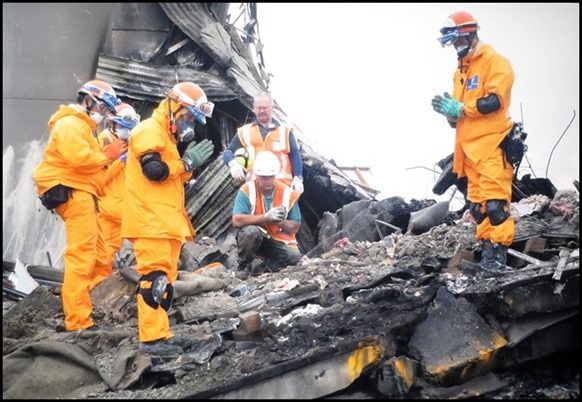 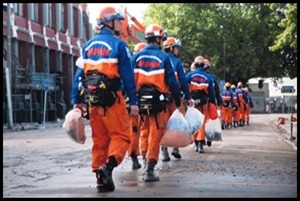  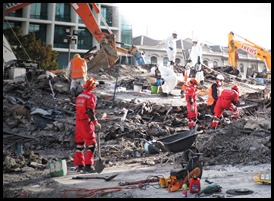 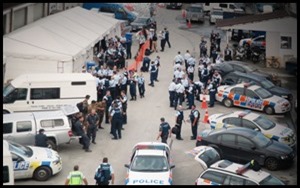 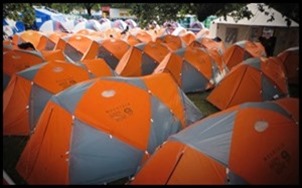 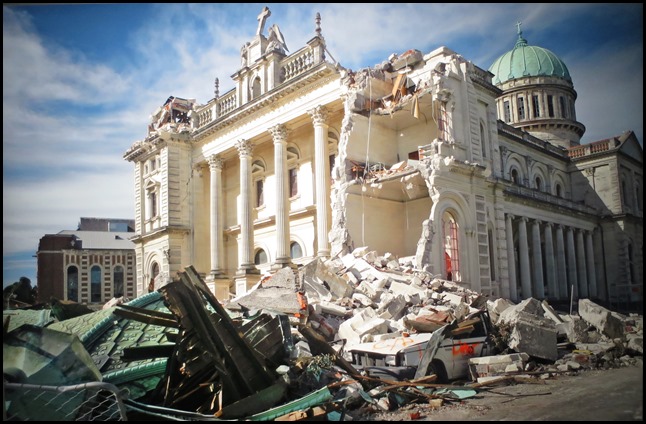 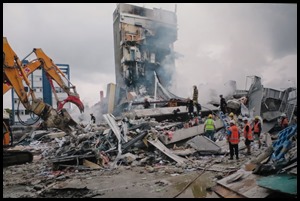 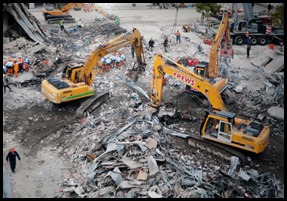 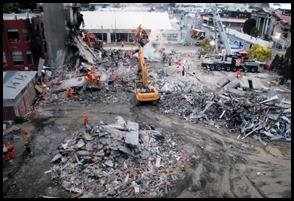 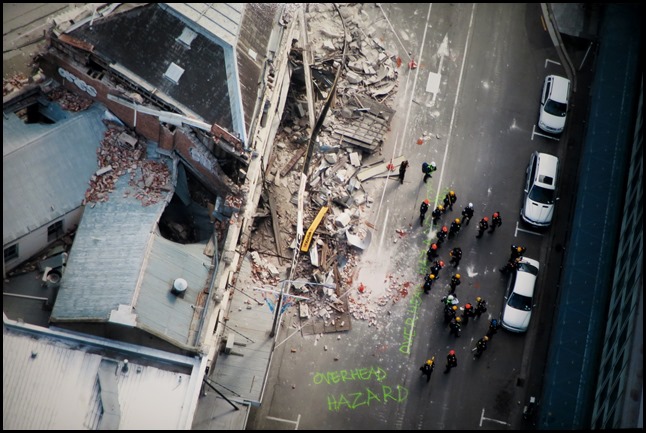 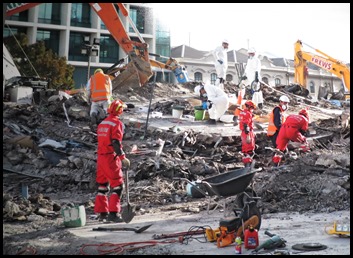 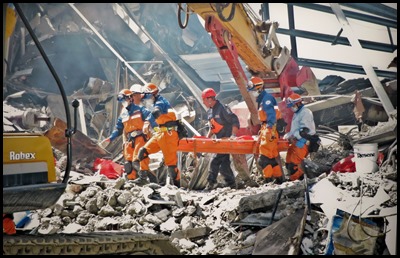    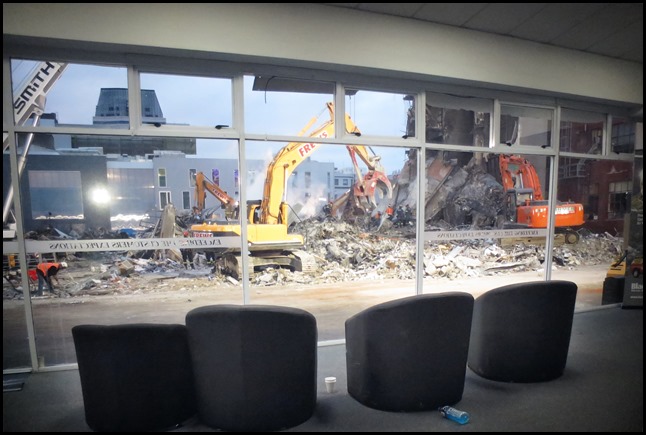 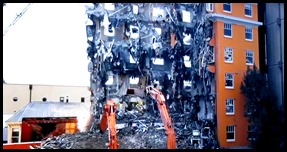 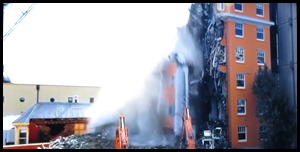 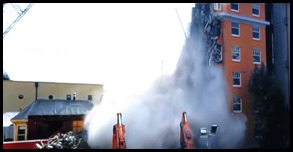 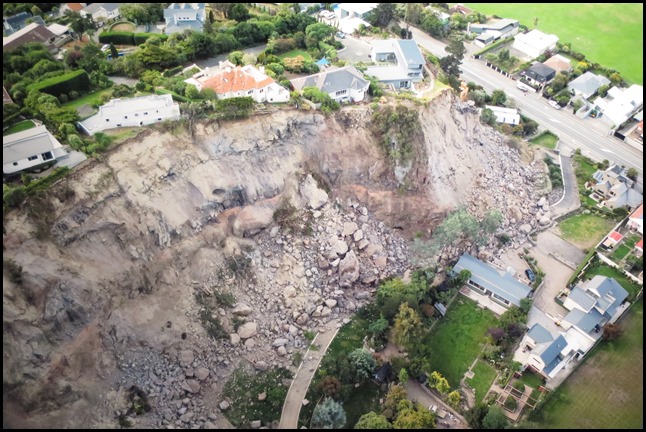 Christchurch’s suburbs did not escape
the devastation. Homes heaved and buckled, tens of thousands of dwellings
suffered damage. Lakes of liquefaction erupted, ground levels shifted and
underground infrastructure was torn apart. The human toll was significant.
Massive landslides crushed houses and buildings. Fifteen people lost their lives
in suburban locations, including two people who were caught in rockfalls on
tracks on the Port Hills.
    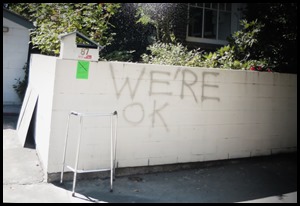  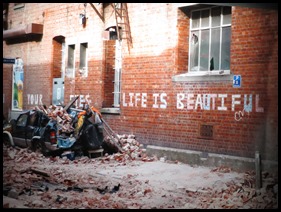 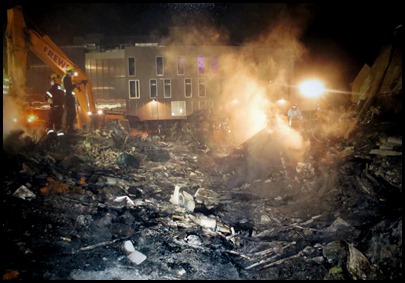 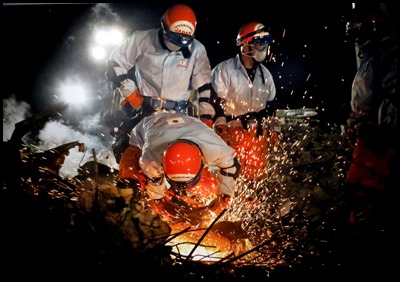 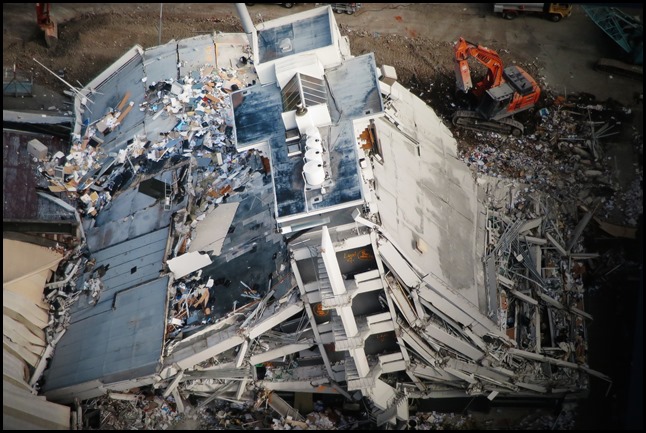 PGC House
– The Pyne Gould Corporation Building on Cambridge Terrace occupied a
picturesque spot on the banks of the Avon River, but became a twisted, broken
mess when it collapsed in the earthquake. Although many people escaped or were
rescued from the four-storey office building, eighteen people died. Access to
the damaged building was a challenge for rescue and recovery teams. Crane
operators were a vital part of the effort, with cranes often providing the only
safe access to parts of the site.
    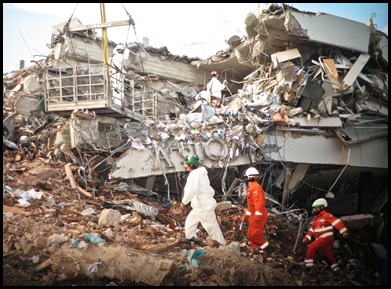    The Canterbury Television – CTV building in Madras Street, in the central city,
suffered a catastrophic collapse and subsequently caught fire. A total of one
hundred and fifteen lives were lost at this site. In the immediate aftermath of
the earthquake rescuers worked around the clock, often in intense heat, thick
smoke and on dangerous rubble, to locate survivors. Efforts to locate and
identify victims continued for weeks. Urban Search and Rescue – USAR teams from
around the world worked alongside local colleagues, contractors and Disaster
Victim Identification specialists in the painstaking task of recovering and
identifying remains for return to their families.
 To Police and Rescue Workers
everywhere – Thank You.
ALL IN ALL AN EXTRAORDINARY
COLLECTION
DRAMATIC AND
SAD |